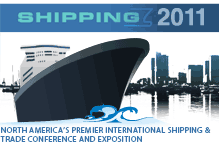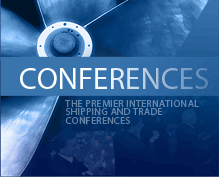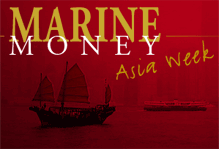
“FORGET OPA, MEET SARBOX” REVISITED
By Gary J. Wolfe, Seward & Kissel LLP
Remember Sarbanes Oxley, the new set of U.S. securities laws applicable to publicly traded companies? While many in the investment community are still in the “I can’t believe it happened stage,” others are starting to enter the “How will I ever comply?” stage. Since Sarbanes-Oxley was adopted last summer, draft regulations, proposed regulations, requests for comments and amendments to proposed regulations have poured out of the regulators: The Securities and Exchange Commission (“SEC”), New York Stock Exchange (“NYSE”), Nasdaq National Market, and the American Stock Exchange. With all of this overlap, it is hard to keep track of just what is or will be required, and when.
The picture, however, is becoming clearer: Many, if not most of the SarbanesOxley requirements will not apply to publicly traded ship owners, because they are foreign companies not managed from the United States. Such companies include Frontline, Stelmar, TEN, Nordic American, Knightsbridge, Ultrapetrol, Excel Maritime, Golar LNG, Torm and Teekay. The way to recognize these companies is that they file annual reports with the SEC on Form 20-F. The SEC term for such companies is “foreign private issuer.” The other companies, those that are managed from the United States and file their annual reports on Form 10-K, will find that they already meet many of the new requirements. In fact, due to the nature of shipping as a relatively straightforward and transparent industry (at least in terms of calculating revenues and knowing how the market is affecting different owners), the publicly traded shipping companies should find that they will have little trouble in meeting those Sarbanes-Oxley requirements that will apply to them.
New Corporate Governance Requirements
With the adoption by the New York Stock Exchange of “final” rules that are presently before the SEC for approval, the situation is becoming clearer. Let us see what new corporate governance requirements will apply to companies such as OSG, OMI and General Maritime (all of which file annual reports on Form 10- K), and Frontline, Stelmar, TEN and Teekay (all of which file annual reports on Form 20-F). The chart shows which corporate governance requirements will apply and when.
VALUING SKAUGEN’S “LIGHTER” Side
As we are going to press, I.M Skaugen and Teekay Shipping announced their intention to create a joint venture with Skaugen’s lightering business, Skaugen Petro Trans (SPT). Although the deal is still subject to due dilly, the boards of both companies have agreed to an MOU and hope to close by October 1, 2003. As we understand it, Teekay will buy 50% of SPT for a combination of cash at closing and an earn out based on projected EBITDA. Fair enough, but the million dollar question is – how do you value a lightering business? Unlike Citibank, which finally sold Crowley Maritime’s MTL Petrolink to American Eagle Tankers after more than a year on the market for half the original $23 million asking price, we believe this case is different as it was Teekay that made the initial overature to Skaugen.
Let’s put this deal into perspective. SPT generated EBITDA of $6.1 million in 2Q03, up sharply from the $1.9 million the company did in 1Q03, but the company’s first half 2003 EBITDA of $8 million is down from the $15 million the company generated in the same period in 2002. Although Morits Skaugen declined to comment on the valuation metric used, the company did say in a recent filing that it thought 6-9x EBITDA was a reasonable range. At Skaugen’s current valuation of 7.6x EBITDA, the company is worth $140 million and Teekay’s 50% stake $70 million. Although
the companies have not yet disclosed the terms by which Teekay can acquire the remaining shares in SPT, it is hard to imagine the the buyers would be satisifed with a minority interest indefinately.
Nordic American Tankers: Lessons Learned from The Dividend Yield
By Andreas Vergottis
Ever since its inception, Nordic American Tankers and, for that matter, its similarly structured peer Knightsbridge Tankers have traded at a premium valuation that other plain vanilla tanker companies could only dream of. Table 1 shows that the historic average Price to Book ratio of NAT and Knightsbridge has exceeded 120 cents/dollar. By contrast, the average peer group rating has been a paltry 89 cents/dollar.
The valuation discrepancy becomes even more glaring if one takes into account that NAT and Knightsbridge ships are in the books at prices that exceed the prevailing market levels for reasons which will be explained shortly. Table 2 shows a more refined comparison between the ratings of the peer group companies based on Enterprise Value (EV)/ Fleet Value. This valuation yardstick adjusts for deviations between book and market values and also for differences in the gearing of the companies. It allows comparison of peer group valuations on a more apples-to-apples basis.
Based on Table 2, NAT and Knightsbridge have traded at a premium of about 50 cents/dollar over the most comparable peer group. The story remains the same whatever valuation yardstick one decides to use. On both asset and earnings based multiples, NAT and Knightsbridge have commanded enviable ratings.
Taking the Make-UP
“If it’s offered, be sure to take the make-up,” Jim Lawrence told me. That was his only advice as I headed off for the interview on CNBC. That and not to drink a full cup of Starbucks beforehand.
At twenty to seven in the morning the clear September light is just beginning to filter into Times Square. I have had my hair worked on aggressively by two women while a third has caked make-out all over my face – the first time I have worn make-up since my one and only performance on the stage as Valentine in Shakespeare’s 12th Night in high school. I had consumed one large latte.
“Three, two, one,” a cameraman with rumpled hair yells and then and then CNBC goes live. The interview begins smoothly enough. The technicians of Wake Up Call have programmed a series of exciting clips of a post-panamax containership discharging boxes in Hong Kong, a laden oil tanker steaming through Malacca Strait and a capesize bulker being pushed from the quay.
Golar Concludes Equity Offering
By Matt McCleery
It’s often been said that opportunistically timing the shipping markets and capital markets simultaneously is impossible – maybe, but Golar LNG has done it. Golar shares are up a breathtaking 74% while its price-to-book value has soared to an unprecedented 3.28x and its P/E is at an internet-sounding 24x.
What we are referring to is the fact that in late July, New York and Oslo-listed Golar LNG raised $57 million in equity (10% of its outstanding shares and 20% of shares not controlled by insiders) through what the company called a “directed equity offering to institutional investors.” As we understand it from talking to joint lead managers Orkla Enskilda and Fearnley Fonds, the new shares, which were sold à la Frontline 2001 (ie, with a few phone call and no prospectus), were picked up by accounts in Norway and America. received larger allocations. We’ve provided a table of Golar’s largest US and Norwegian investors below. As you can see, even the big U.S. investors have relatively small holdings in Golar, probably because the company has never done an underwritten equity issue in the U.S and is not followed by American analysts. Much of the float that is not controlled by insiders resides in accounts controlled outside America or in private hedge funds not required to disclose their holdings. The newly issued shares, which were priced off of a 52-week high closing price of NOK 73, were issued on August 1st and theoretically will be eligible to trade in both Oslo and New York immediately.
K-SEA TO IPO WITH JEFFERIES, LEHMAN, UBS & MCDONALD
By Matt McCleery
In Mid-August, we learned that U.S-based K-Sea Transportation had filed to sell 3.5 million common units in an IPO structured as a Master Limited Partnership to raise $68 million by selling 41% of the company. We expect to see a deal in late September.
K-Sea, which had net income of $14.4 million on revenues of $80 million in fiscal 2002, and provides transportation of refined products using tugs and barges in the northeastern United States. Proceeds will be used to reduce indebtedness, and the company has applied to be listed on the New York Stock Exchange under the ticker “KSPN.” Lehman Brothers, UBS Investment Bank, McDonald Investments Inc., Raymond James and Jefferies & Co Inc. are listed as underwriters for the sale. We view this transaction as a preliminary step toward the exit strategy of the private equity firm that controls the company.
As our readers may know, we are big supporters of using the master limited partnership structure for shipping deals – and the valuation table below tells you why. A master limited partnership is simply a publicly traded version of a limited partnership, whereby two or more partners conduct a business jointly and in which one or more of the partners is liable only to the extent of the amount of money the partner has invested. Typically, limited partners do not receive dividends, but enjoy tax benefits which are considerable for US taxpayers who invest in US assets such as those owned by K-Sea. The selection of underwriters, especially Raymond James and McDonald Investments, tells us that the deal will be distributed to individual, or “retail,” investors.
SEABULK PURSUES ARBITRAGE IN THE CREDIT MARKETS
By Matt McCleery
Seabulk International, which is controlled by lead underwriter Credit Suisse First Boston Private Equity (5 1%) and Carlyle/Riverstone (25%), headed back into the bond market in early August and issued $150 million of 10- year unsecured high yield bonds. In addition to Credit Suisse First Boston, which was sole lead book-running manager, Banc of America Securities LLC and RBC Capital Markets were co- lead managers and Merrill Lynch & Co had a piece of the economics as well. As the pricing table indicates, Seabulk achieved outstanding execution on the deal, especially in light of its single B rating.
Why did they do it? The deal is a refinancing. Seabulk used proceeds of the offering to repay $144.2 million of its five-year $180 million term loan (LIBOR + 500bps) /revolver (LIBOR + 450bps) arranged by Fortis and NIB Capital in September 2002. The company used the remaining $200,000 to pay fees and expenses associated with amending that credit agreement. Concurrent with the offering, Fortis, NIB and Bank of Scotland issued a commitment letter to Seabulk to provide the company with an $80 million five-year revolver of which $30 million was deemed drawn, as that is the amount that remaining outstanding after the offering. The $18 million sale/leaseback that Seabulk concluded with Transamerica and Nordea in April 2003 for a UT 755 was not be involved in these transactions. The projections in the offering memorandum assumed that the deal would price at 9%, which was 50 basis points low.
So what is this really all about? One school of thought was that Seabulk and its private equity-led board of directors simply arbitraged the capital markets to capture better terms at a time when the company needs free cash to renew its fleet. Seabulk’s bank debt was priced at about 500 basis points over LIBOR and its bonds were just slightly pricer. While it is true that in today’s low base-rate environment the all-in floating rate is only 6% versus the 9.5% the company will pay in the bond market, Seabulk’s new bonds are fixed for 10 years. Who knows, since the Federal Reserve recently said short rates will stay low, perhaps CSFB put together a swap arrangement to bring the notes back to floating, or at least shorter in term, as Citibank did when CP Ships issued bonds last summer. Another perspective came from some market observers who said things like “the banks are feeding this company to the dogs once again.”
WHY TEEKAY BOUGHT A PIECE OF TORM
By Matt McCleery
K laus Kjærulff apparently did a superb job selling the Torm story at Marine Money Week. After all, sitting in the audience during his speech on June 18th were Teekay’s Chairman Sean Day and its CFO Peter Evensen. Perhaps as they listened to Mr. Kjærulff speak with pride of his company’s successful business model and its consistently high placement in the annual Marine Money Rankings table, Messrs. Day and Evensen got to thinking – good company, good people, good strategy, good sector, lots of Marine Money awards…hmmm, let’s ask Bjorn Moller if he thinks we should buy it. And Bjorn and Teekay’s board gave the nod because, in the second week of July, Teekay announced that it had purchased a 16% stake in Torm from motivated seller Sanyo Hellas of Greece.
Although the dollar figures aren’t enormous by Teekay standards, we think this is one of the most structurally significant deals in recent memory. Strategically, economically and even intellectually, the transaction is elegant in its simplicity. For the price of a 10-year old aframax, Mother Teekay staked its claim to Torm, made a substantial in-road into the product tanker industry, and possibly played the role of white knight on behalf of Norden.
The timing was also good. As many know, Teekay has been in the market in recent months looking at all kinds of deals and inspecting all kinds of ships – from LNG carriers to LPG carriers – looking to put capital to work. But the challenge of growing Teekay further stems from its stated strategy of “creating a sustainable competitive advantage through high capacity utilization and scale.” Put more bluntly, Teekay wants to be big at whatever it does. But there is a caveat: the company is also working hard to diversify market exposure and increase its return on equity – and, perhaps more than any single acquisition the company has ever completed, the acquisition of Torm will accomplish all of these objectives.
Book runner League Tables 2Q03 – SO Far, SO Good
It’s been a very good year for shipping bankers, at least so far. As you can see from the Dealogic tables below, 36 broadly syndicated deals were closed in the first half of the year, with $6 billion in fresh financing raised.
Average syndicated loan size of $166 million is almost exactly on par with our multi-year average. Of course you won’t see some of the powerhouse names on this list, like Royal Bank of Scotland and the various German banks that control no less than 50% of all shipping debt. That’s because those institutions tend to do more bilateral lending and may not even report the syndicated deals that they are involved with.
Bear in mind, too, that some of the biggest deals of 2003 were not concluded before June 30, 2003. For example, on July 2, 2003 Malaysia International Shipping Corp (MISC), closed a bridge loan with an 8-bank syndicate to fund the $1.1 billion acquisition of American Eagle Tankers Ltd from Neptune Orient Lines. Banks included in that 35 basis point deal were Barclays Capital, HSBC, Citibank, Bank of Tokyo-Mitsubishi, DBS Bank, and BumiputraCommerce Bank, which will also receive credit in the third quarter. Worldwide’s massive $1.3 billion term underwriting is in the works now and will give the second half numbers a lift.
Equity Valuations and Rankings
By Matt McCleery
“Our share price has climbed 50% since we won Marine Money’s Annual Rankings award in 2002,” Klaus Kjaerulff, CEO of Torm, announced proudly to a room full of investors and financiers at Marine Money Week in June. After we had taken a moment to bask in the glory of Klaus’ statement, we got to thinking: what is the correlation between Rankings and share price performance?
Although the June Rankings issue of Marine Money was full of our annual ratio analysis of 60 marine companies, a rigorous exercise we’ve been performing for 10 years in an effort to help people make “apples to apples” comparisons across sectors based on historical performance, we did not include movement in share price over the period analyzed (full year 2002) or the period since that performance was completed (1- 2Q03).
Charting the movement in share price, although perhaps a less intellectual measure when viewed on a stand-alone basis, takes on new meaning in the context of the Rankings themselves. After all, proponents of efficient market theory believe that equity valuations more often than not reflect the sum total of all information, insight and interpretation available in the market – a figure to be taken seriously by shareholders, management, boards of directors and financiers – and an area where perception can be as important as reality. So herewith we present a companion chart ranking the Rankings companies by change in share price over the 2002 and year to date 2003, along with the chart of Ranking winners from 2003. It should be noted that all figures are presented in local currencies, many which have seen considerable movement In the last 12 months. We also did not include dividends.







